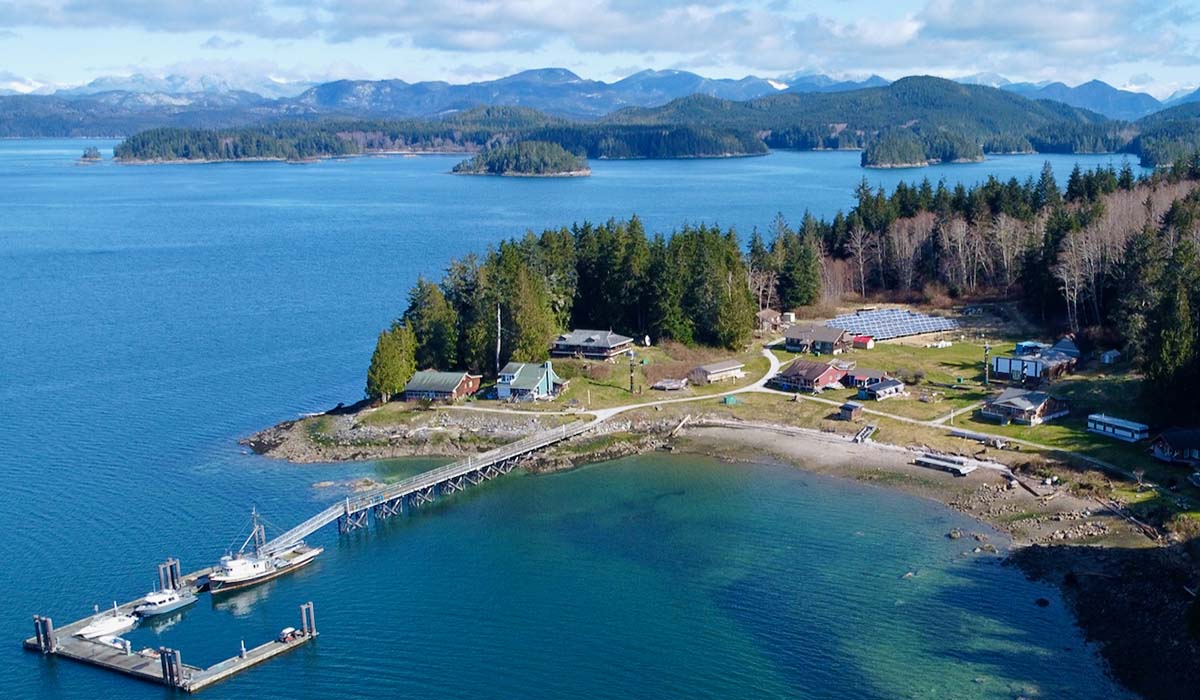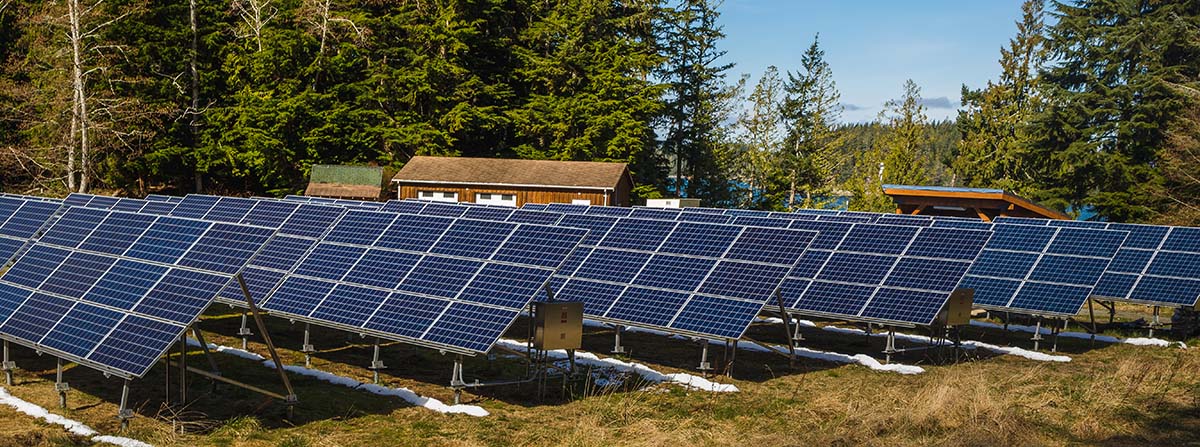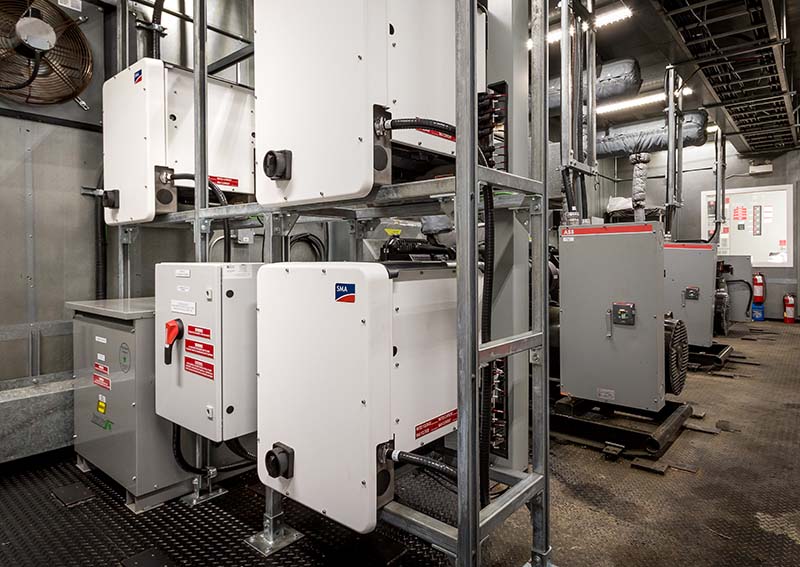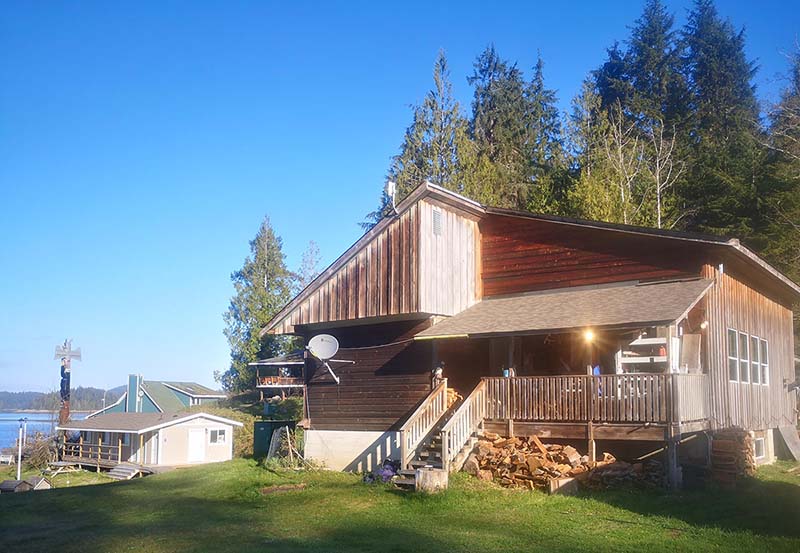
The electricity that powered the First Nation Island of Harbledown, Canada, came at a high price — noisily rumbling generators and steep energy costs.
One of six thousand islands hugging Canada’s province of British Columbia, Harbledown Island is a small indigenous community that subsists off rich local resources such as fishing and logging. The area’s pristine environment also draws tourists who enjoy the region’s spectacular wildlife, including a large summer concentration of orcas, rich salmon fisheries, grizzly bears, bald eagles, seals and sea lions.
But for the last 50 years, the island’s naturally occurring idyllic silence has been disrupted by the diesel generators that provided electricity to its residents. More importantly, diesel fuel for the generators was expensive and transported to the remote location by barge.
Now, thanks to a government grant that determined the site’s basic design and to the collaboration of two expert energy system designers — Hakai Energy Solutions and Ageto Energy — a hybrid microgrid powers Harbledown Island. The microgrid generates a significant portion of its electricity from 120 kilowatts (kW) of solar PV and a 125- kW energy storage inverter paired with 440 kilowatt hours (kWh) of energy storage. Renewable energy developer Hakai Energy built the system while Ageto Energy designed the microgrid and its controls. The Ageto ARC microgrid controller manages the system, which includes three generators.

By design, the installation maximizes renewable energy as the power source. But solar PV output is impacted by available sunshine, which is not always plentiful on Harbledown Island. Located just east of northern Vancouver Island, Harbledown Island is prone to high precipitation levels and resulting cloud cover, according to Wikipedia.
“We still need to run the generators because of the rainy local climate,” said Mike Murray, chief operating officer and co-founder of Ageto Energy. But Murray said the Ageto system makes the renewable and conventional systems work together. “It communicates with the generator controller made by ComAp and ensures that the solar, battery storage and generators are all coordinated properly.” Outfitted with three sizes of generators, the controller selects the right-size generator based on the current load demand.
UL’s HOMER Pro used for initial feasibility study and preliminary design
Ageto Energy used UL’s HOMER Pro® to model the Harbledown Island system in the planning stages. The software compared the performance of multiple energy resources for estimated electrical loads, recommended the optimal combination of solar PV, batteries and generators, and then predicted the daily timing of each energy input.
Murray said that after a year of operation, the Harbledown Island microgrid has performed well despite slightly worse weather than initially anticipated. The microgrid has dramatically reduced fuel consumption by 60%, saved 400 gallons of diesel fuel during June — the best month for solar production — saved the community more than $20,000 (USD) annually and reduced Carbon dioxide emissions by 57 metric tons.
“It is so gratifying to see HOMER Pro helping communities reduce their fuel use and carbon emissions significantly, even in a high latitude and very cloudy location like coastal British Columbia,” said Peter Lilienthal, microgrid lead at UL and creator of HOMER software platform. Lilienthal holds a doctorate in management science and engineering.
Remote operation via microgrid controller system
Because of COVID-19 travel restrictions, the system was configured and commissioned remotely from Fort Collins, Colorado, via satellite link, according to Murray. When the system was under way, Ageto immediately began real time remote monitoring from its Fort Collins headquarters.
The ARC controller sends data to the system each second, balancing the power generation with the electric load. “Because of this capability,” Murray said, “Harbledown has only had two hours of downtime in a year-and-a-half of operation.”

Lessons learned from island microgrids
Ageto Energy designed the Harbledown microgrid with the battery and generators operating in grid-forming mode at all times. With this approach, the batteries can provide additional spinning reserves that maintain the voltage and frequency of the microgrid more precisely.
Murray pointed out that in many other hybrid systems, the battery is grid-forming when the generator is off and the generator is grid-forming when the generator is on, which necessitates switching modes and increases the risk of system faults. But when both the battery and generator always operate as grid-forming, a fault in one power supply will not bring down the entire system — the other resource will seamlessly pick up the whole system load.
Additionally, the Harbledown microgrid’s Ageto ARC controller enables the batteries to discharge or charge instantly to respond to load changes while allowing the generator to ramp up more slowly, resulting in more efficient operation.

Based on the positive results from the Harbledown Island microgrid, Ageto is looking forward to further collaborations with Hakai Energy Solutions on microgrids for native communities in British Columbia.
“We’re beginning to show that certain design elements in these community microgrids are repeatable. That’s going to shorten construction time and ultimately reduce the cost of future projects,” Murray said.
Murray said Harbledown Island is now saving on fuel costs since solar generation substitutes for diesel when the sun is shining. He noted one of the most critical and life-enhancing results is the quiet. Islanders can enjoy the remote area’s silence for the first time in 50 years, thanks to the microgrid power provided by solar PV and batteries alone.


UL Solutions’ HOMER® Pro is the leading pre-feasibility design software for modeling microgrids, with more than 250,000 users in more than 190 countries. It provides engineering and financial analyses of remote, off-grid and grid-tied complex distributed energy systems, helping reduce financial risk for owners and developers. Learn more about HOMER Pro and download a complimentary trial.

A Canadian company Hydrostor has developed a way to store excess energy as compressed air and then housing the air underwater inside giant balloons. It may sound funny, but the idea is efficient at energy storage, very cheap, and an environmentally friendly, zero-emissions solution. Because you can start a diesel engine with compressed air, you can operate them as a Pneumatic Motor at MEP of about 300 psi 24/7 on-demand. I developed American Railroad Co-generation on that very same basis. Follow this premise by reading:
Ditch the Batteries: Off-Grid Compressed Air Energy Storagehttps://www.lowtechmagazine.com ⺠2018/05 ⺠ditch-th.e batt…. May 16, 2018. and sse our website americanrailroadcogeneration.com
Hi Jerry,
Very interesting! Thank you for this comment and we will have a look at your website.
All the best,
Lili Francklyn